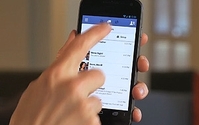-
by Erik Sass
, Staff Writer,
November 7, 2014

With manufacturers and telecoms marketing a new generation of cheap smartphones and tablets, the number of people using mobile devices to access the Internet is set to soar from 2.2 billion today to
3.8 billion by 2020, according to a new forecast from GSMA Intelligence.
In proportional terms, that represents an increase from around 30% of the world population today to around 50% six
years from now -- making it one of the most rapid and widespread technological shifts in history. Almost all the new adoption will come in the developing world, GSMA predicts, as the
market for smartphones and mobile devices in the developed world is already nearing maturity. Overall, the number of mobile Internet subscribers in the developed world will increase from
roughly 700 million today to 800 million in 2020.
Meanwhile, the corresponding numbers in the developing world will double from 1.5 billion to three billion. In Sub-Saharan Africa, for
example, GSMA expects mobile Internet penetration to increase from 17% of the population today to 37% by 2020. GSMA also noted that a major shift is underway in connection speed away from
2G connections (which currently constitute 60% of the mobile Internet in sub-Saharan Africa) to high-speed 3G/4G connections. Thus, the total number of 2G connections will decline from 900 million
today to 800 million in 2020, while the number of 3G/4G connections will more than double from 1.3 billion to three billion over the same period.
GSMA Director General Anne Bouverot
stated: “Mobile technology is already playing an invaluable role in the social, economic and environmental development of the developing world; the mobile internet has the potential to trigger a
new wave of growth and innovation if we can remove the barriers to digital inclusion.”
In April of this year the GSMA launched its new Digital Inclusion program, which aims to expand
access to the mobile Internet by collaborating with mobile operators, governments, non-governmental organizations, and other players to remove barriers to mobile adoption. GSMA identified four main
areas where major obstacles are impeding access, including network coverage, affordability and taxation, consumer barriers like illiteracy and lack of awareness about mobile technology, and lack of
local content in different languages.